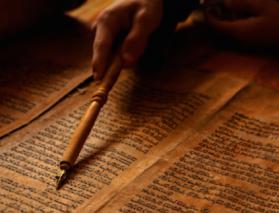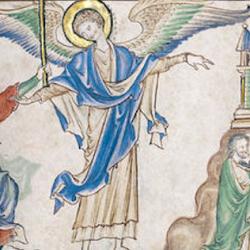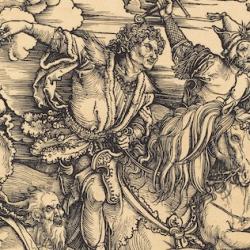The seven trumpets of Revelation 8-11 link up at most points with the days of creation. As James Jordan has pointed out, the very structure of the trumpet section nods vigorously toward Genesis 1; the sequence of seven is divided into a 4 + 3 pattern, with four quick judgments and then three longer sections described as “woes.” This inverts the 4 + 3 structure of creation, in which the last three days all include pronouncements of blessing.
In addition, the trumpets line up in detail with the creation days:
Day 2’s division of waters links with the mountain thrown into the sea.
Day 3’s division of water and land links generally with the star falling into and embittering the streams of fresh water.
Day 4’s heavenly lights are judged by the fourth trumpet.
Day 5’s swarmers appear in the fifth trumpets locorpions.
Day 6’s men and horses appear in the sixth plague.
The seventh trumpet is greeted with worth of the God who “has begun to reign” (11:17).
The trick is the first trumpet. How do hail, fire, and blood thrown to earth fulfill Day 1? There is a possible connection through Joel 2:30, where the coming of the Spirit is accompanied by blood and fire. Fire is of course also associated with the coming of the Spirit (Matthew 3:11), and the fire of the Spirit is cast down by Jesus (cf. Luke 12:49, note reference to “baptism” in the context). The first trumpet is Pentecostal, the casting of the Spirit who hovered over the waters on the first day. Obviously, the first trumpet shows Pentecost in reverse – not the formation of a ordered universe from the formless waste of the original creation, but a fire that turns the land back into a desert.
The Spirit comes to turn the disciples into lamps burning in a dark world; the Spirit also comes to convict the world of sin and righteousness and judgment, and to scour the land of a third of the trees and green grass.










